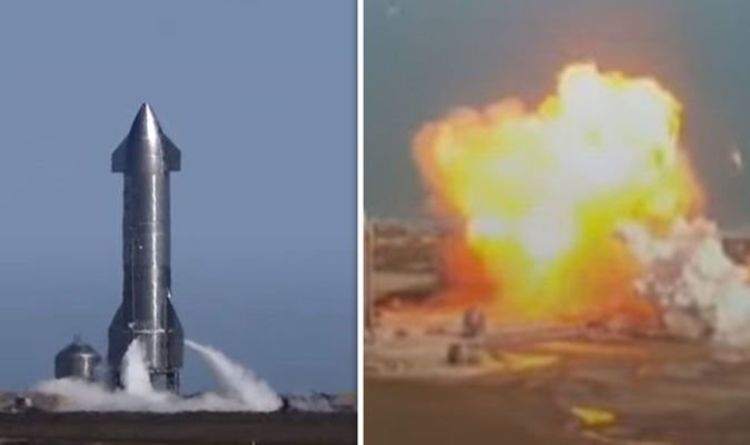Elon Musk’s SpaceX Starship SN10 EXPLODES due to ‘methane leak’ moments after completing 10km test flight

SPACEX’s Starship SN10 prototype rocket exploded minutes after successfully landing on a concrete pad on Wednesday.
The rocket stood upright on the ground for about 10 minutes before suddenly bursting up with its tail in flames due to a possible methane leak.


Nevertheless, the high-altitude flight test in Boca Chica, Texas, represented success for business magnate Elon Musk’s aerospace company.
Musk appeared to laugh off the explosion after the landing in a tweet on Wednesday night.
“Starship SN10 landed in one piece!” the SpaceX CEO wrote.
SN10 was launched shortly before 6.15pm ET fueled by three Raptor engines.


The rocket reached about 10km when the engines began individually shutting down for the vehicle to begin its descent.
SN10 made its way back down in a belly flop position with its four wings maneuvering.
[adguru adid=”11014″]
The vehicle completed a soft landing that was widely celebrated by the aerospace community and social media onlookers, before it unexpectedly exploded.
SN10 marks great progress from the last two Starship prototypes.

In December, the first high-altitude test flight, Starship SN8, was deemed a success but had a hard landing and exploded.
On February 2, Starship SN9 attempted a 10km flight but one of its raptor engines failed to ignite and it exploded upon landing.
Earlier on Wednesday, SpaceX had SN10 fueled for the test flight around 3.20pm ET but aborted the test launch with 0.1 seconds before liftoff.


The rocket’s engines had sputtered off, the company announced, as they prepared for a liftoff later in the day.
“Launch abort on slightly conservative high thrust limit,” Musk tweeted.
“Increasing thrust limit & recycling propellant for another flight attempt today.”

The SpaceX CEO had estimated a 60 percent chance for SN10 to land successfully.
The main objective with SN10 was to land without incident.
In a post on the SN10 test flight, SpaceX wrote that “a controlled aerodynamic descent with body flaps and vertical landing capability” were crucial to landing Starship across the solar system and back on Earth.
HEROES SICKENED
Pelosi under fire as troops ‘served raw meat while protecting Capitol’
“This capability will enable a fully reusable transportation system designed to carry both crew and cargo on long-duration, interplanetary flights and help humanity return to the Moon, and travel to Mars and beyond,” SpaceX stated.
[adguru adid=”11014″]
Musk has said he is “highly confident” that Starship “will be safe enough for human transport by 2023.”
He also aims to get humans to Mars by 2026, which is seven years before NASA’s target time to land its astronauts on the planet.
source: the-sun.com






